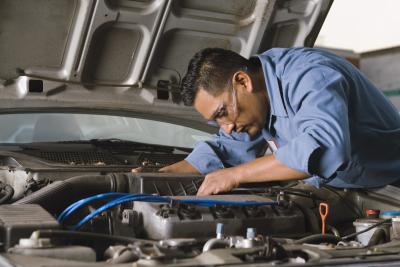
Radiators serve one of the most essential roles in the functioning of a vehicle. Radiators serve to keep your car's engine at a moderate level ensuring that it does not overheat or abruptly quit. Radiator problems are very common because initial issues with radiators are sometimes hardly noticeable. In order to prevent other problems from arising in your vehicle, it is crucial to know the symptoms of a bad radiator.
Be aware of issues with your car's heating and cooling system. If your car suddenly begins to blow out excessive heat/cool air or begins to lack in its usual blowing capacity, there could be a problem with the radiator.
Note how may times your vehicle overheats. Check for coolant system leaks. Avoid putting water in your radiator. Check for cracks in the radiator or bad hoses.
Check the thermostat by feeling the upper radiator hose right after you start your car. Ensure that the hose gets hot after a while. If the hose doesn't get hot, that means that it is not open and this impacts the fluids that flow through the radiator.
Use a infrared thermometer to scan the surface of the radiator for cold spots. If you find any spots, that could mean that the radiator is clogged and full of debris. A clogged radiator is one of the most common causes of bad radiators.
Look at the functioning of the radiator cap. A malfunctioning radiator cap, which builds too much pressure or does not receive coolant, may denote a problem with the radiator.